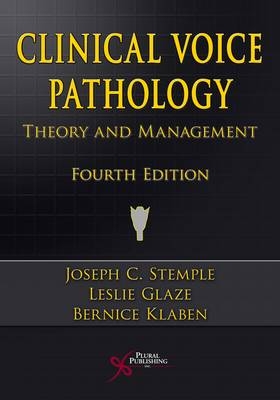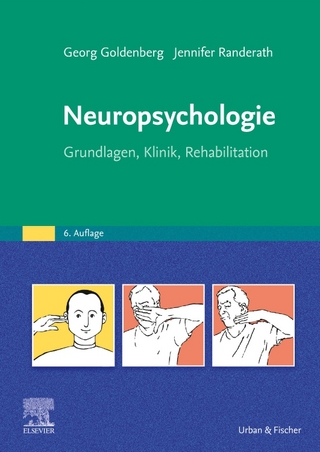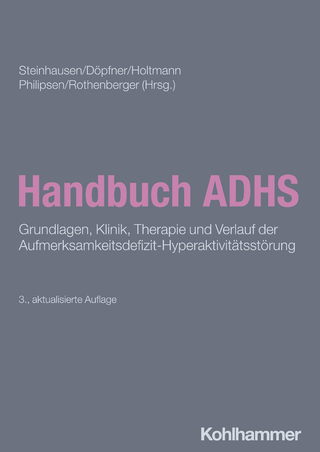
Clinical Voice Pathology
Plural Publishing Inc (Verlag)
978-1-59756-348-2 (ISBN)
- Titel ist leider vergriffen;
keine Neuauflage - Artikel merken
A classic work, now in its fourth edition, Clinical Voice Pathology is a distillation of the authors' many years of experience gained in a multitude of settings, across a huge range of disorders in populations through the life spectrum, and represents etiologies arising from medical, environmental, social, psychological, occupational, and even idiopathic threats to vocal health. Whether typical voice user, occupational voice user, elite vocal performer, head and neck cancer client, or anyone who has lost the ability to communicate competently and confidently due to detrimental voice change, each patient presents a unique diagnostic dilemma: how best to return the voice to optimal condition? In answering this question, the authors assert that voice pathologists must apply knowledge of anatomy and physiology, etiologic correlates, laryngeal pathologies, and differential diagnosis to conduct an accurate evaluation. Traditional clinical management requires well-developed skills in the interpersonal interview, behavioral observation and modification, and task selection and elicitation.
The contemporary voice assessment no longer relies solely on audio-perceptual voice quality judgments, but also demands technical expertise in using voice laboratory instruments for acoustic analysis, aerodynamic measures, and laryngeal imaging to help inform the management plan. Finally, we can only succeed when we have educated our patients to understand and self-monitor voice production behaviors independently and accurately. Thus, this book organizes, explains, and illustrates the comprehensive hierarchy of knowledge necessary to manage voice disorders by: Opening with an entertaining history of voice disorders from its ancient foundations to the present, so clarifying the role of speech-language pathologists in the care of voice disordered patients, and introducing the interdisciplinary background that has proved essential in attaining success in voice therapy. Detailing the anatomy and physiology of voice production to provide an understanding of the structure and function of the laryngeal mechanism as an essential basis for evaluating phonatory function, examining the larynx and vocal folds, and recognizing the impact of abnormal changes or adaptations on voice production.
Providing a thorough update on the etiologies of voice disorders (including misuse, medically-related factors, primary disorders, and personality-related influences) by discussing the common factors associated with the cause and maintenance of voice disorders in order to understand best options for treatment planning. Presenting the pathologies of the laryngeal mechanism, organized according to ASHA's Classification Manual for Voice Disorders-I in eight major groups: Structural pathologies; Inflammatory conditions; Trauma or injury; Systemic conditions affecting voice; Aerodigestive conditions affecting voice; Psychiatric or psychological disorders affecting voice; Neurologic voice disorders; Other disorders of voice. The text illustrates many of the pathologies with color plates.
Discussing the objectives and procedures of a systematic diagnostic voice evaluation, introducing traditional evaluation techniques, including the patient interview, audio-perceptual judgments, patient self-assessment, determining the cause(s) and maintaining factor(s) of the voice disorder, and educating the patient about these findings to establish a collaborative management plan based on these clinical data. Reviewing the instrumental measures that comprise a comprehensive voice assessment, including the scientific principles that underlie their development, application, and interpretation. In addition to standard measures of acoustics, aerodynamics, electromyography, and stroboscopy, this edition explains the utility of high speed digital imaging and videokymography tools. The appendix includes instrumental measurement norms and a helpful glossary of terms. Exploring an array of voice therapy approaches following the orientations of hygienic, symptomatic, psychogenic, physiologic, and eclectic treatments.
Using frequent case examples to illustrate major insights about voice treatment gathered from the authors' thirty-plus years of clinical experience, and orienting the reader to the theories, selection criteria, and clinical methods for specific voice management principles. Delivering a treatment framework that is appropriate for common, yet diverse complaints due to nodules, laryngopharyngeal reflux, paralysis, and vocal fold dysfunction, as well as infrequent disorders such as papilloma, mutational falsetto, and transgendered voice. Highlighting the current clinical evidence that either supports or refutes popular treatments used in voice therapy. Introducing the factors that influence clinical management approaches for the performing voice, such as personality, temperament, performance routines and schedule, and other special considerations needed for care and treatment, as well as defining the roles of a necessarily expanded interdisciplinary team, and identifying the affiliate organizations that represent and support voice performers.
In addition to traditional voice therapy considerations, non-traditional alternative treatments that are popular with this population are also considered. Providing what is effectively a stand-alone manual on the management and rehabilitation of the laryngectomized patient, reflecting the current 'best practice' in voice rehabilitation or restoration in head and neck cancer patients, and outlining the complementary roles of the interdisciplinary treatment team as a means to understanding the multiple management goals: cure the disease, select optimal communication methods, ensure safe swallowing, and address any associated physical, social, and emotional changes that affect each patient Packed with a vast amount of entirely new artwork, redrawn and historical images, full color illustrations, replete with case examples, multimedia images of pathologies, and fully revised and updated, Clinical Voice Pathology maintains and improves on the standards set by its predecessors and is set to enjoy the same worldwide adulation.
In the authors' words "Over the past four decades, our chosen specialty of clinical voice pathology has expanded greatly within the field of communication disorders. Nonetheless, this fourth edition of our text retains its original purpose: to provide students and clinicians with a strong foundation of basic voice science infused with a deep clinical understanding of the best methods for assessing and treating voice disorders. As we prepared this edition, we challenged ourselves to revise every chapter thoroughly, by referencing the latest relevant published research, infusing clinical treatment evidence, and sharing lessons learned from our ever-broadening experience, whenever possible. The effort was both illuminating and rewarding. Consequently, we hope that you, the reader, will find this text clear, informative, and a worthwhile addition to your professional library."
Joseph Stemple, PhD Dr. Stemple is a Professor of Communication Sciences and Disorders in the College of Health Sciences at the University of Kentucky. Leslie Glaze, PhD, CCC-S Leslie Glaze is a speech-language pathologist specializing in voice disorders, cleft palate, and alaryngeal speech. She is an Adjunct Assistant Professor and Instructor in the Department of Speech-Language-Hearing Sciences at the University of Minnesota in Minneapolis, Minnesota, where she was formerly the Director of Clinical Programs. Bernice Klaben, PhD, CCC-SLP, BRS-S Dr. Klaben is an Associate Professor in the Department of Otolaryngology - Head and Neck Surgery at the University of Cincinnati Medical Center.
Chapter 1: Voice: A Historical Perspective Ancient History The Renaissance The 17th to 19th Centuries The Laryngeal Mirror Further Advancements Voice Therapy Clinical Voice Pathology References Chapter 2: Anatomy and Physiology Anatomy The Laryngeal Valve Respiration and Phonation Vocal Tract Resonance Structural Support of the Larynx Hyoid bone Laryngeal cartilages Muscles Muscles for Respiration: Inspiration and Exhalation Laryngeal Muscles Extrinsic Laryngeal Muscles Intrinsic Laryngeal Muscles Vocal Fold Microstructure Epithelium Basement Membrane Zone Lamina Propria Connective Tissue Vocal Muscle Blood Supply and Secretions Neurologic Supply Central Nervous System Control Peripheral Innervation Laryngeal Reflexes Developmental Changes Geriatric Vocal Folds DNA Microarray Gene Expression Analysis Physiology of Phonation Theories of Vibration Fundamental Frequency Control Intensity Control Phonation Modes and Voice Quality Control References Chapter 3: Some Etiologic Correlates Etiologies of Vocal Misuse Voice abuse Inappropriate vocal properties Medically-Related Etiologies Direct surgeries Indirect surgeries Chronic illnesses/disorders Primary Disorder Etiologies Personality-Related Disorders References Chapter 4: Pathologies of the Laryngeal Mechanism Incidence of Voice Disorders Pathology Classifications Structural Pathologies of the Vocal Fold Malignant Epithelial Dysplasia of the Larynx Benign Epithelial and Lamina Propria Abnormalities of the Vocal Fold Vocal nodules Vocal fold polyps Vocal fold cysts Reactive vocal fold lesion Reinke's edema and Polypoid degeneration Vocal fold scarring Vocal fold sulcus/Sulcus vocalis Vocal fold granuloma and Contact ulcer Keratosis, Leukoplakia, and Erythroplasia Recurrent Respiratory Papilloma (RRP) Subglottic and Laryngeal/Glottic Stenosis and Acquired Anterior Glottic Web Vascular Lesions: Vocal Fold Hemorrhage, Hematoma, Varix and Ectasia Congenital and Maturational Changes Affecting Voice Congenital Webs (Synechia) Laryngomalacia Puberphonia: Mutational Falsetto and Juvenile Voice Presbyphonia or Presbylaryngeus Inflammatory Conditions of the Larynx Cricoarytenoid and Cricothyroid Arthritis Acute Laryngitis Laryngopharyngeal Reflux Chemical Sensitivity / Irritable Larynx Syndrome Trauma or injury Internal Laryngeal Trauma: Thermal & Chemical Exposure; Intubation/Extubation Injury External Trauma and Arytenoid Dislocation Systemic conditions affecting voice Endocrine disorders Hypothyroidism & Hyperthyroidism Sexual Hormonal Imbalances Growth Hormone Abnormalities (Hyperpituitarism) Immunologic disorders Systemic Lupus Erythematosus (SLE) Sjogren's Syndrome Scleroderma Fibromyalgia Allergies Non-Laryngeal Aerodigestive Disorders Affecting Voice Respiratory Diseases Asthma & Chronic Obstructive Pulmonary Disease Gastroesophageal Reflux Disease (GERD) Infectious Diseases of the Aerodigestive Tract Laryngotracheobronchitis (Croup) Mycotic (Fungal) Infections: Candida Psychiatric or psychological disorders affecting voice Psychogenic Conversion Aphonia and Dysphonia Factitious Disorders or Malingering Gender Dysphoria or Gender Reassignment Neurologic voice disorders Peripheral Nervous System Pathology Superior Laryngeal Nerve Paralysis: Unilateral or Bilateral Recurrent Laryngeal Nerve Paralysis: Unilateral Recurrent Laryngeal Nerve Paralysis: Bilateral Superior Laryngeal Nerve (SLN) or Recurrent Laryngeal Nerve (RLN) Paresis Myasthenia Gravis Movement disorders affecting the voice Spasmodic Dysphonia Adductor Spasmodic Dysphonia (ADSD) Abductor Spasmodic Dysphonia (ABSD) Mixed Adductor and Abductor Spasmodic Dysphonia Essential Vocal Tremor Central Neurological Disorders Affecting Voice Amyotrophic Lateral Sclerosis Parkinson Disease Multiple Sclerosis Huntington's Chorea Other disorders of voice Vocal Abuse, Misuse, and Phonotrauma Vocal Fatigue Muscle Tension Dysphonia (Primary and Secondary) Ventricular Phonation (Plica Ventricularis) Paradoxical Vocal Fold Motion (Vocal Cord Dysfunction) or Episodic Dyspnea References Chapter 5: The Diagnostic Voice Evaluation The Players Patient Profile Referral Sources Medical Examination Voice Pathology Evaluation Diagnostic Voice Evaluation Referral Reason for the referral History of the problem Medical history Social history Oral-peripheral examination Auditory perceptual voice assessment Impressions Prognosis Recommendations Patient self-analysis of the voice disorder References Appendix 5.1 Sample Report Appendix 5.2 Consensus Auditory Perceptual Evaluation of Voice Appendix 5.3 The Rainbow Passage Appendix 5.4 Vocal Component Checklist Appendix 5.5 Voice Handicap Index Chapter 6: Instrumental Measurement of Voice Clinical Utility Basics of Technical Instruments Microphones and Recording Environment Digital Signal Processing Acoustic Measurements Pitch Detection Algorithm Fundamental Frequency Intensity Voice Range Profile, Phonetogram, and Physiological Frequency Range of Phonation Perturbation Measures Signal (or Harmonic)-to-Noise Ratios Spectral Analysis Aerodynamic Measurements Calibration Pressure, Flow, Resistance and Ohm's Law Airflow Equipment Flow Measurement Subglottal Air Pressure Measurement Phonation Threshold Pressure Laryngeal Resistance Inverse Filter Laryngeal Imaging Endoscopy Stroboscopy High Speed Digital Imaging Kymography Criteria for Laryngeal Imaging Endoscopic Imaging Techniques Rigid Scope Flexible endoscope Patient Comfort Recording Protocol Visual Perceptual Judgments Structural appearance of the entire larynx Glottic closure pattern Supraglottic hyperfunction Mucosal wave Amplitude Symmetry Periodicity Electroglottography (EGG) Laryngeal Electromyography (LEMG) Normative Information Electrical Safety Hygienic Safety The Clinical Voice Laboratory Glossary References Appendix 6.1 Joint Statement: ASHA and AAO-HNS Appendix 6.2 Vocal Tract Visualization and Imaging: Position Statement Chapter 7: Survey of Voice Management Voice Therapy Orientations Hygienic Voice Therapy Evidence Symptomatic Voice Therapy Evidence Psychogenic Voice Therapy Evidence Physiologic Voice Therapy Evidence Eclectic Voice Therapy Case Study Illustrating Voice Therapy Orientations Hygienic Voice Therapy Treatment Strategies for Voice Abuse and Misuse Vocal Hygiene Therapy Approaches The Homemaker The Noisy Job Environment The Public Speaker Voice Abuse or Misuse in Children Can We Always Expect Success? Hydration Confidential Voice Symptomatic Voice Therapy Therapy Approaches for Respiration Therapy Approaches for Phonation Therapy Approaches for Resonance Therapy Approaches for Pitch Therapy Approaches for Loudness Therapy Approaches for Rate Treatment Approaches for Laryngeal Area Muscle Tension Psychogenic Voice Therapy Functional Aphonia/Dysphonia Functional Falsetto Vocal Cord Dysfunction (VCD) Physiologic Voice Therapy Laryngeal Muscle Imbalance The Post-Surgical Patient The Geriatric Voice Vocal Function Exercises (VFE) Resonant Voice Therapy (RVT) Accent Method of Voice Therapy Lee Silverman Voice Treatment (LSVT) Team Management of Specific Laryngeal Pathologies Vocal Fold Cover Lesions Laryngopharyngeal Reflux (LPR) and Gastroesophageal Reflux Disease (GERD) Unilateral Vocal Fold Paralysis Spasmodic Dysphonia Successful Voice Therapy References Appendix 7-1. Phrases and Sentences Graduated In Length Chapter 8: The Professional Voice The Professional Voice User History The "At-Risk" Status Professional Roles The Otolaryngologist The Voice Pathologist The Producer The Agent of Manager Clinical Pathways Otolaryngology-Voice Pathology-Voice Pedagogy Voice Pedagogy-Otolaryngologist-Voice Pathology Voice Pedagogy-Voice Pathology-Otolaryngology Otolaryngology-Voice Pedagogy Voice Pathologist-Voice Pedagogy Common Etiologic Factors Personality Factors Phonotrauma Drugs Hydration Common Pathologies Acute and Chronic Non-infectious Laryngitis Vocal Nodules Contact Ulcers and Granulomas Gastroesophageal Reflux Disease (GERD)/Laryngoesophageal Reflux (LPR) Voice Fatigue Vocal Fold Hemorrhage and Vascular Pathologies Supportive Training and Techniques Alexander Technique The Linklater Method The Feldenkrais Method The Lessac System Estill Voice TrainingA' Summary Glossary of Terms References Chapter 9: Rehabilitation of the Laryngectomized Patient Incidence of Laryngeal Cancer Etiology Symptoms of Laryngeal Cancer Medical Evaluation Staging and TNM Classification Lymph Node Distribution Treatment Options Conservation Combined Treatments Radiation Therapy Surgery Concurrent Chemoradiotherapy Methods of Reconstruction Myocutaneous Flaps Free Flaps Jejunal Free Flap Gastric Pull-Up Need for Follow-Up Treatment Multidisciplinary Rehabilitation Team Head and Neck Surgeon Plastic and Reconstructive Surgeon Radiation Oncologist Medical Oncologist Speech-Language Pathologist Oncology Nurse Dietician Radiologist Physical Therapist Dentist and/or Prosthodontist Psychologist Audiologist The Laryngectomized Visitor Special Concerns of the Laryngectomized Patient Communication Physical Concerns Respiration Coughing and Sneezing Tracheal Tubes and Tracheostoma Vents Swallowing Smell and Taste Safety Lifting Psycho-Social Concerns Speech Rehabilitation Artificial larynx Esophageal speech Surgical prosthetics Helpful Web Sites on Head and Neck Cancers References
| Erscheint lt. Verlag | 1.11.2009 |
|---|---|
| Zusatzinfo | B/W w/ color inserts |
| Verlagsort | San Diego |
| Sprache | englisch |
| Maße | 178 x 254 mm |
| Themenwelt | Geisteswissenschaften ► Psychologie ► Biopsychologie / Neurowissenschaften |
| Medizin / Pharmazie ► Gesundheitsfachberufe ► Logopädie | |
| ISBN-10 | 1-59756-348-X / 159756348X |
| ISBN-13 | 978-1-59756-348-2 / 9781597563482 |
| Zustand | Neuware |
| Haben Sie eine Frage zum Produkt? |
aus dem Bereich


